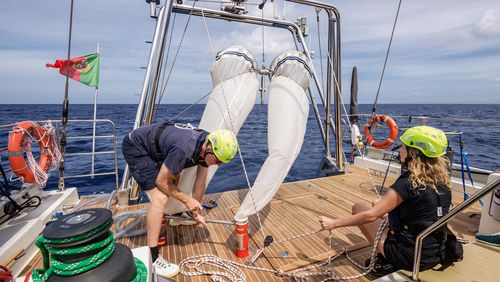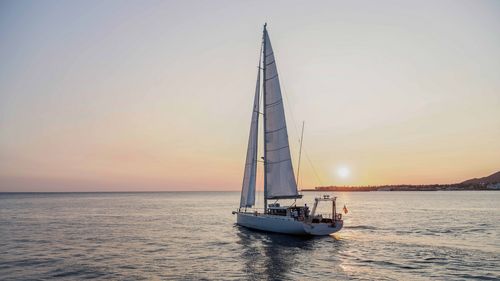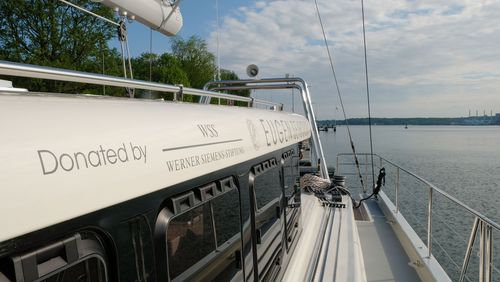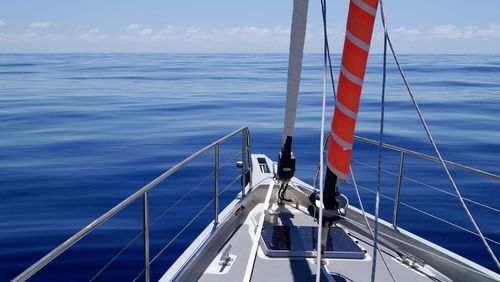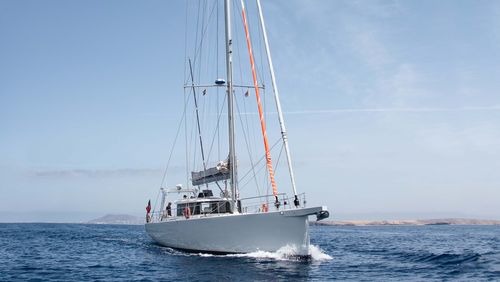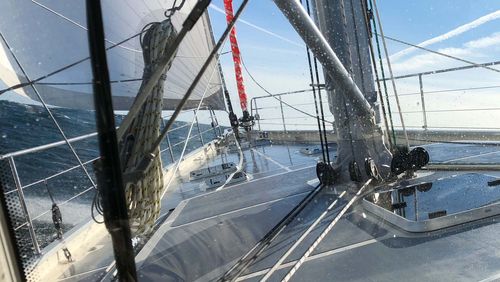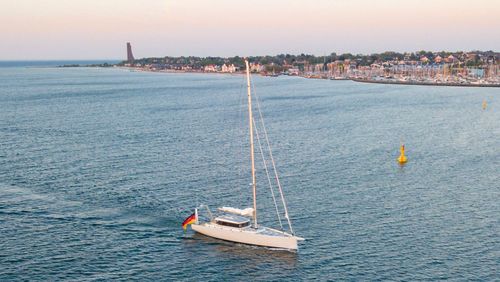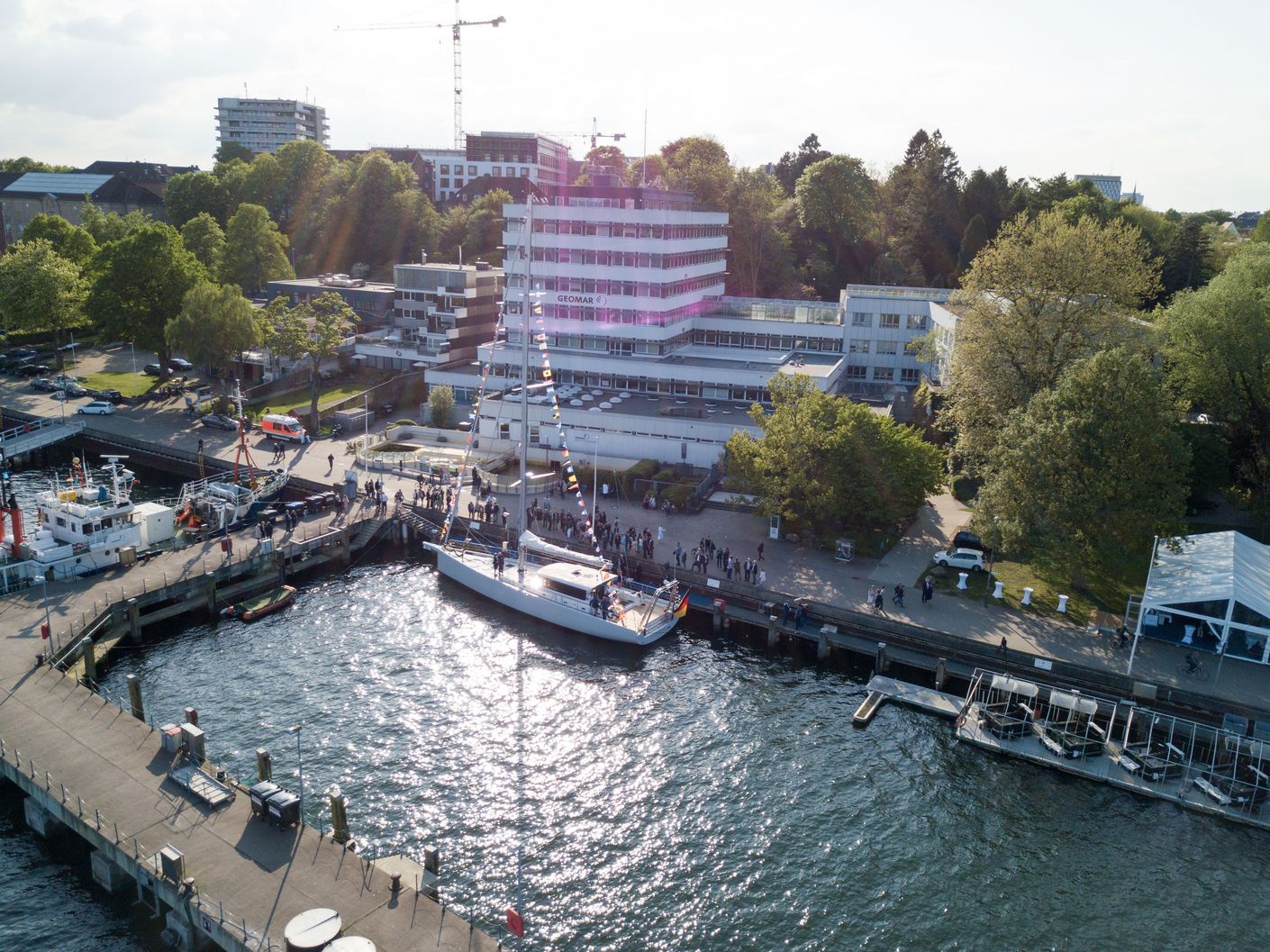
How the oceans influence the climate
In the past 50 years, the temperature in the upper 75 metres of the ocean waters has increased by 0.55 degrees. Although this may sound like a minor change, it’s highly significant. And the waters must not become any warmer. Researchers believe that one degree more is the upper limit— after that, serious problems await. “Not only would the sea levels rise dangerously,” says palaeoclimatologist Gerald Haug, “the ocean currents might also change.” And this would have devastating consequences for the climate of our planet.
Gerald Haug is the director of the Max Planck Institute for Chemistry in Mainz and a professor at ETH Zurich. A highly renowned palaeoclimatologist, Haug has conducted extensive research into the climatic conditions from earlier eras, for example, during the Ice Age, and he discovered that major climate change can contribute to the downfall of advanced civilisations, as was the case with the Maya and the Tang Dynasty in China. Over the next five to ten years, Haug plans to document how the oceans are changing in the age of global warming.

Gigantic biomass
Till now, the ocean has functioned as a huge buffer zone for carbon dioxide and warmer temperatures. Due to its sheer size—two-thirds of the Earth is covered by water—the ocean can accommodate an enormous amount of biomass. Plant life in the seas, especially algae, absorbs more carbon dioxide than all terrestrial plants combined, making marine plants the most important carbon dioxide buffer in the world. And that’s not all. The ocean performs another essential service by absorbing some 80% of the world’s heat. But the ocean doesn’t work for free. The price we pay is that the oceans are warming, that they’re becoming more acidic and that they can absorb less oxygen.
Fears of a permanent El Niño
Warming seas will also have a large influence on the Earth’s major air and ocean currents—and thus on our entire climate system. Higher temperatures can potentially alter the course of the Gulf Stream, which largely steers our climate. “A climate that is warmer by one to three degrees will probably result in our having to deal permanently with the weather phenomenon El Niño,” says Gerald Haug. Till now, El Niño has occurred every two to seven years in the Pacific between South America and Indonesia and Australia. The weather phenomenon triggers unusually high water temperatures at the American coast, resulting in mass fish mortality and enormous amounts of rainfall, flooding and strong wind storms.
How healthy are the seas today?
Many of the complex interactions between water, sun, air, land masses and living creatures are now well understood. But not all, and certainly not fully. And so, Gerald Haug and his team have decided to systematically investigate how the oceans are changing in the warming climate. The researchers will test the physical properties of seawater (temperature, salinity), its biological make-up(algae, microorganisms) and chemical composition (concentration of oxygen, carbon dioxide and trace metals), and they hope to predict how the seas will develop over the next 10 to 15 years.
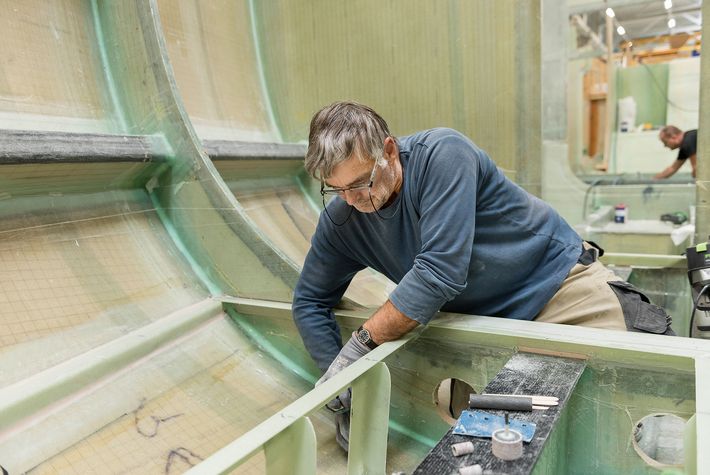
A greener voyage
It’s a task of Herculean proportions—one that requires more than one research ship. “Our studies will be particularly interesting if we can conduct them in both summer and winter,” Haug says. “The seasonal differences are decisive in understanding the climate. But for that, we’d need a ship every three months—which would be very expensive.” The German research ships “Sonne” and “Meteor” cost roughly 40,000 Euro per day. They also have to be booked three years in advance and can be used for only four weeks at a time. Another disadvantage is that the steel hulls and motors of these ships contaminate the very water and atmosphere the researchers want to test. And the ships are too big and heavy for many tests. “Sometimes these expensive, mammoth ships can only pull nets that are 60 cm long to collect plankton,” Haug explains. What’s more, the research ships are often not available when needed. “The last El Niño, one-and-a-half years ago, was foreseeable. That no research ship was available to examine the biogeochemical properties of El Niño is, from a scientific point of view, more than regrettable,” says Gerald Haug. “And we're still feeling the after-effects of El Niño—for example, the drought at the Horn of Africa and the ensuing famine.”
A vision becomes reality
All these drawbacks inspired Gerald Haug and his team to envision the perfect research ship: the vessel should have all the necessary research equipment on board, but should still be light and fast ... its exhaust fumes shouldn’t pollute the water or the atmosphere ... it should always be available to the research team ... and it should be affordable. With these requirements in mind, Gerald Haug began seeking partners to realise his vision; in 2015, he found them in German shipyard owner Michael Schmidt—and in the Werner Siemens Foundation, which financed the construction of the innovative research ship.
For two years now, construction has been underway on the world’s greenest research vessel: a fast and safe sailing yacht that has all necessary research equipment on board and that is ecological and economical to operate. In May 2018, the ship—named “Eugen Seibold” in honour of the renowned German marine geologist who died in 2013—will set out to sail the seas.
Text: Brigitt Blöchlinger
Photos: Margit Wild
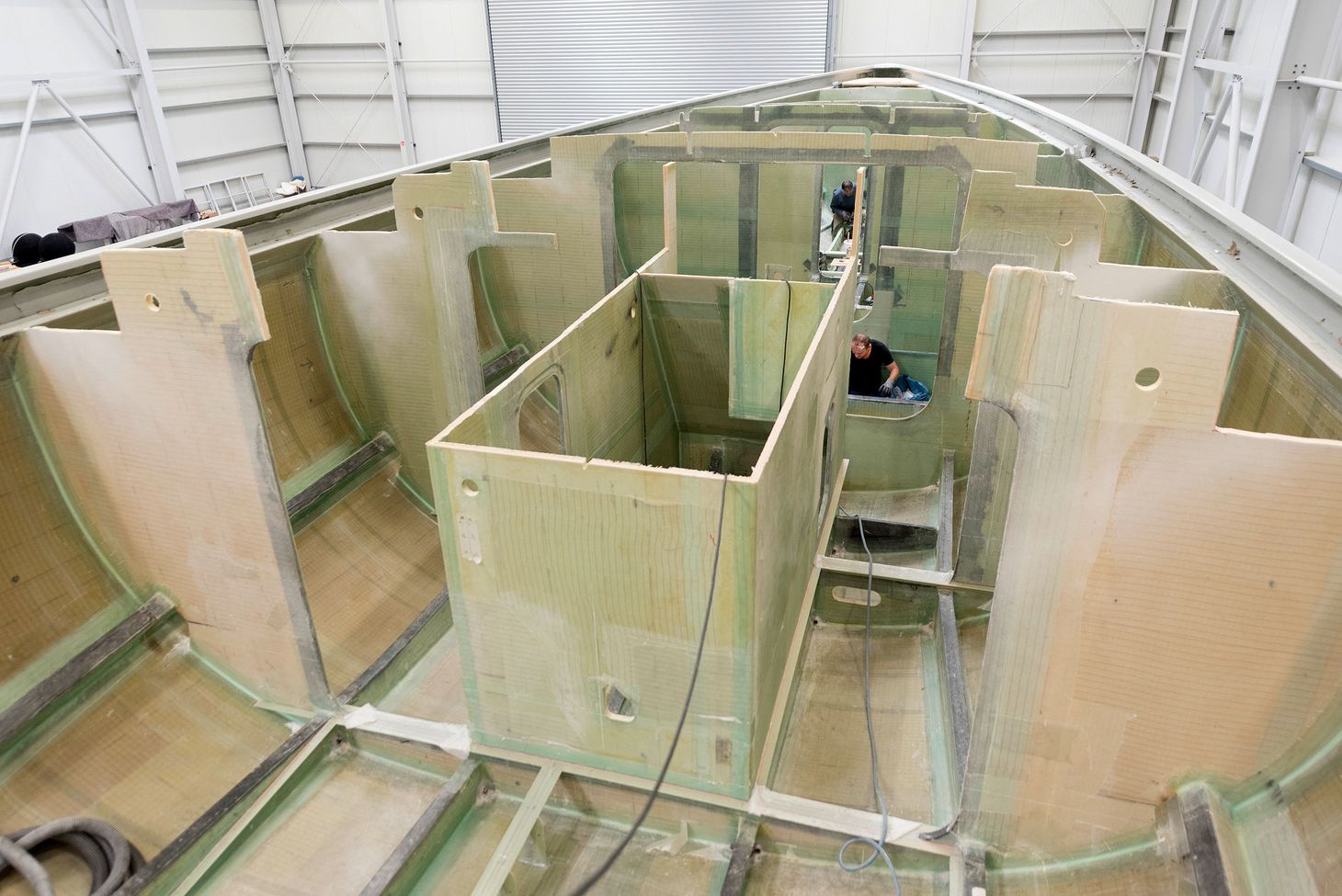
![[Translate to English:] Wenn Passatwinde im Golf von Panama das warme Küstenwasser aufs Meer hinausschieben, strömt aus 300 bis 400 Metern Tiefe kühles, nährstoffreiches Wasser nach.](/fileadmin/_processed_/b/a/csm_01-WSS-News-Seibold-upwelling_a08a676efb.png)


